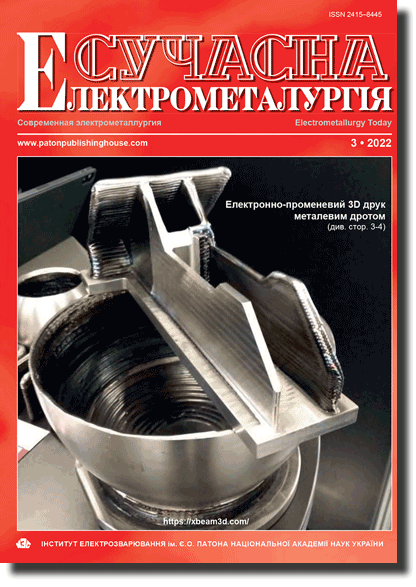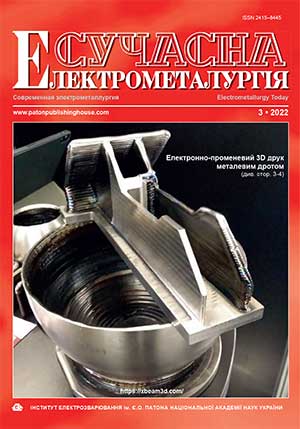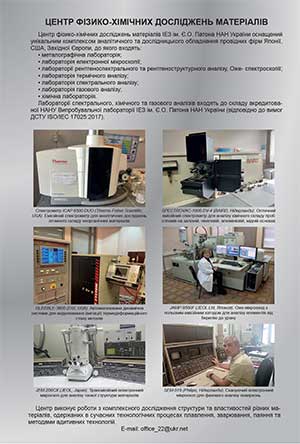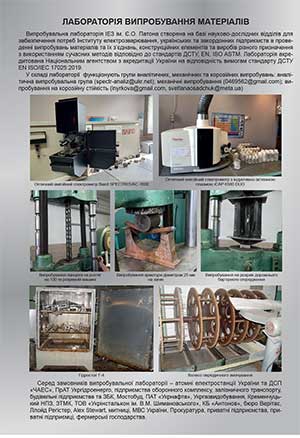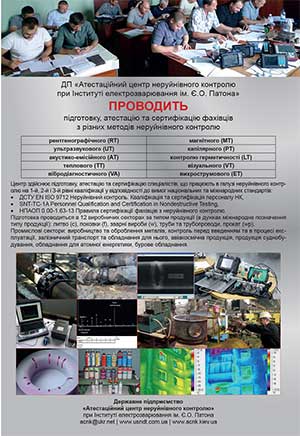| 2022 №03 (04) |
DOI of Article 10.37434/sem2022.03.05 |
2022 №03 (06) |
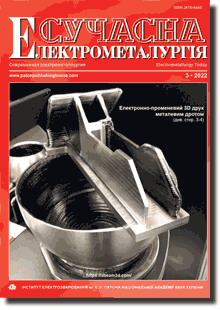
"Suchasna Elektrometallurgiya" (Electrometallurgy Today), 2022, #3, 29-37 pages
Influence of the parameters of the process of plasma-arc spheroidization of current-conducting wire from low-carbon steel on the granulometric composition of the produced powders
D.V. Strogonov2, V.M.Korzhyk1, Yi Jianglong2, A.Yu. Tunik2, O.M. Burlachenko2, A.O. Alyoshyn1
1China-Ukraine Institute of Welding, Guangdong Academy of Sciences, Guangdong Provincial Key Laboratory of Advanced Welding Technology. 510650, Guangzhou, China. E-mail: patonjournal@gwi.gd.cn
2E.O. Paton Electric Welding Institute of the NAS of Ukraine. 11 Kazymyr Malevych Str., Kyiv, 03150, Ukraine. E-mail: office@paton.kiev.ua
Abstract
The possibility of producing spherical powders by application of the technology of plasma-arc sputtering of current-conducting wire of 1.6 mm dia. from low-carbon steel was experimentally confirmed. It was found that at different parameters of plasma arc sputtering in the general case the main fraction of the powder is 25…250 μm fraction, which amounts to 95 % of the powder overall volume, quantity of particles of < 25 and 250…315 μm fractions in optimum sputtering modes is at a rather low level and is not more than 5 %. The plasma-arc sputtering mode was selected, which will ensure a change of the granulometric composition towards increase of the content of fine fractions (< 80 μm), which are in great demand in the field of additive 3D printing technologies: current — 280 A; wire feed rate — 12.0 m/min; arc gap length — 8 mm; plasma gas flow rate — 50 l/min; concurrent gas flow rate — 60 m3/h; gap between plasma-forming and compression nozzle — 1 mm; cathode immersion depth — 1 mm. The shape and structure of the atomized particles was studied, most of which generally have a regular spherical shape. Here, the sphericity coefficient depends on process parameters and is equal to 0.7…0.9 on average at optimal sputtering modes. In the total mass of the obtained spherical powders the share of satellites and isolated particles of an irregular shape is close to 1…3 %. Ref. 27, Tabl. 3, Fig. 4.
Keywords: current-conducting wire; plasma-arc sputtering; melt dispersion; powder spheroidization; solidification; spherical powder; mode parameters; granulometric composition
Received 17.06.2022
References
1. Sun P., Fang Z., Zhang Y. et al. (2017) Review of the methods for the production of spherical Ti and Ti alloy powder. JOM, 69, 1853-1860. https://doi.org/10.1007/s11837-017-2513-52. Brika S., Letenneur M., Alex-Dion C., Brailovski V. (2020) Influence of particle morphology and size distribution on the powder flowability and laser bed fusion manufacturability of Ti-6Al-4V alloy. Additive Manufacturing, 31, 732-748. https://doi.org/10.1016/j.addma.2019.100929
3. Yim S., Bian H., Aoyagi K., Yamanaka K. (2021) Spreading behavior of Ti-48Al-2Cr-2Nb powders in powder bed fusion additive manufacturing process: Experimental and discrete element method study. Ibid., 73, 337-353. https://doi.org/10.1016/j.addma.2021.102489
4. Nie Y., Tang J., Teng J., Ye X. et al. (2020) Particle defects and related properties of metallic powders produced by plasma rotating electrode process (PREP). Advanced Powder Technology, 31, 2912-2920. https://doi.org/10.1016/j.apt.2020.05.018
5. Chen G., Zhao S., Tan P. et al. (2018) A comparative study of Ti-6Al-4V powders for additive manufacturing by gas atomization, plasma rotating electrode process and plasma atomization. Powder Technology, 333, 38-46. https://doi.org/10.1016/j.powtec.2018.04.013
6. Advanced plasma atomization (APA) process. https://www. advancedpowders.com/powders-every-technology
7. Advanced plasma atomization process. https://www.ge.com/ additive/plasma-atomization-technology
8. Entezarian M., Allaire F., Tsantrizos P. et al. (1996) Plasma atomization: A new process for the production of fine, spherical powders. JOM, 48, 53-55. https://doi.org/10.1007/BF03222969
9. Petrunichev, V.A., Kudinov, V.V., Kulagin, I.D. (1965) Producing of spheroidized metallic powder by wire spraying. Izvestiya AN SSSR. Metally, 2, 68-94 [in Russian].
10. Strukov, N.N., Shitsyn, Yu.D., Belinin, D.S. (2011) Controlling of powder particle size in plasma spraying of bar material. Vestnik PGTU, 3, 117-121 [in Russian].
11. Bykovskiy, O.G., Lapteva, A.N., Mischenko, S.P., Pasko, N.N. (2015) Heat content and structure of particles in plasma spraying with a current-conducting wire. Welding Inter., 30(5), 383-388. https://doi.org/10.1080/09507116.2015.1090168
12. Rusev, G.M., Rusev, A.G., Ovsyannikov, V.V. et al. (2013) Effect of mode parameters of plasma spraying using current-carrying wire on fractional composition of sprayed particles. The Paton Welding J., 1, 44-46.
13. Kudinov, V.V. (1966) Heating of current-conducting wire by constricted arc. Svarochn. Proizvodstvo, 4, 11-13 [in Russian].
14. Korzhyk, V.M., Khaskin, V.Yu., Yao Yuhui et al. (2022) Influence of accompanying compressing air flow on the coating structure and properties in plasma-arc spraying by consumable current-conducting wire. The Paton Welding J., 2, 3-10. https://doi.org/10.37434/tpwj2022.02.01
15. Kharlamov, M.Yu., Krivtsun, I.V., Korzhik, V.N. et al. (2008) Effect of the type of concurrent gas flow on characteristics of the arc plasma generated by plasmatron with anode wire. Ibid., 6, 14-18.
16. Korzhik, V.N., Korob, M.F. (2012) Mechanized line PLAZER 30PL-W for plasma-arc wire spraying of coatings on largesized parts of «shaft» type. Svarshchik, 4, 13-15 [in Russian].
17. ISO 2591-1:1988: Test sieving - Pt 1: Methods using test sieves of woven wire cloth and perforated metal plate.
18. Bykovsky, O.G., Lapteva, A.N., Fomenko, A.V. et al. (2014) Influence of material kind and technology of spraying on plasma jet structure and its pressure on substrate. Svarshchik, 3, 39-41 [in Russian].
19. ISO 9276-6:2008: Representation of results of particle size analysis - Pt 6: Descriptive and quantitative representation of particle shape and morphology.
20. Sytnikov, N.N. (1987) Influence of steel wire feed speed on nature of metal spraying with plasma jet. Avtomatich. Svarka, 8, 63-64 [in Russian].
21. Karp, I.N., Rudoj, A.V. (1991) Influence of steel wire feed speed on dispersion of metal by air jet. Ibid., 10, 36-38 [in Russian].
22. Kudinov, V.V. (1966) Heating of current-conducting wire by constricted arc. Svarochn. Proizvodstvo, 4, 11-13 [in Russian].
23. Bobrov, G.V., Privezentsev, V.I., Umnova, L.V. (1965) Formation of particles in melting of wire in plasma jet. Poroshk. Metallurgiya, 1, 79-86 [in Russian].
24. Krasnov, A.N. (1965) Plasma spraying of tungsten. Ibid., 3, 1-5 [in Russian].
25. Krasnov, A.N. (1965) Plasma spraying of molybdenum. Ibid., 1, 1-5 [in Russian].
26. Gulyaev, I.P., Gulyaevб P.Yu., Korzhykб V.N. et al. (2015) Experimental investigation of process of plasma-arc wire spraying. The Paton Welding J., 3-4, 36-41. https://doi.org/10.15407/tpwj2015.04.04
27. Petrunichev, V.A., Titkov, V.V. (1977) To mechanism of wire plasma spraying. Fizika i Khimiya Obrabotki Materialov, 1, 14-16 [in Russian].
Advertising in this issue:
The cost of subscription/purchase order journals or individual articles
| Journal/Currency | Annual Set | 1 issue printed |
1 issue |
one article |
| TPWJ/USD | 384 $ | 32 $ | 26 $ | 13 $ |
| TPWJ/EUR | 348 € | 29 € | 24 € | 12 € |
| TPWJ/UAH | 7200 UAH | 600 UAH | 600 UAH | 280 UAH |
| AS/UAH | 1800 UAH | 300 UAH | 300 UAH | 150 UAH |
| AS/USD | 192 $ | 32 $ | 26 $ | 13 $ |
| AS/EUR | 180 € | 30 € | 25 € | 12 € |
| SEM/UAH | 1200 UAH | 300 UAH | 300 UAH | 150 UAH |
| SEM/USD | 128 $ | 32 $ | 26 $ | 13 $ |
| SEM/EUR | 120 € | 30 € | 25 € | 12 € |
| TDNK/UAH | 1200 UAH | 300 UAH | 300 UAH | 150 UAH |
| TDNK/USD | 128 $ | 32 $ | 26 $ | 13 $ |
| TDNK/EUR | 120 € | 30 € | 25 € | 15 € |
AS = «Automatic Welding» - 6 issues per year;
TPWJ = «PATON WELDING JOURNAL» - 12 issues per year;
SEM = «Electrometallurgy Today» - 4 issues per year;
TDNK = «Technical Diagnostics and Non-Destructive Testing» - 4 issues per year.





